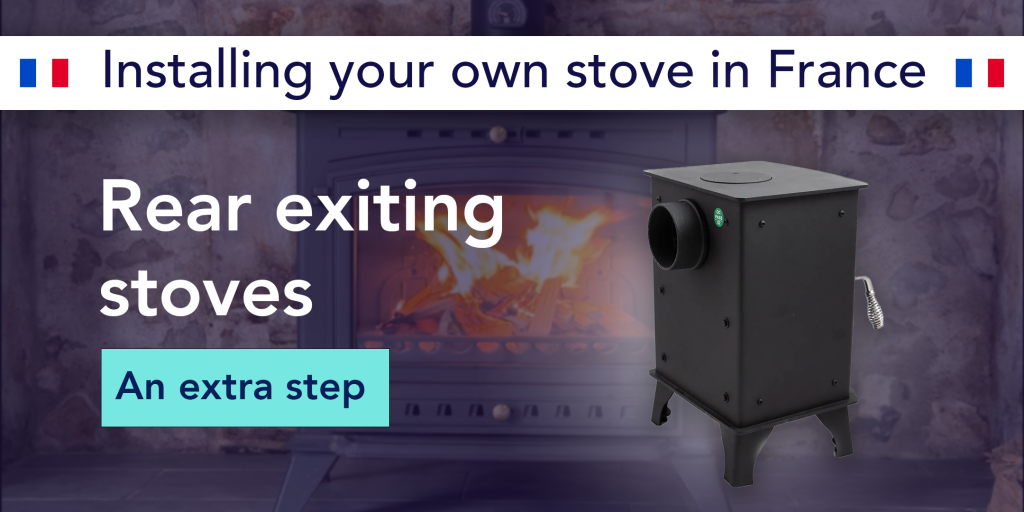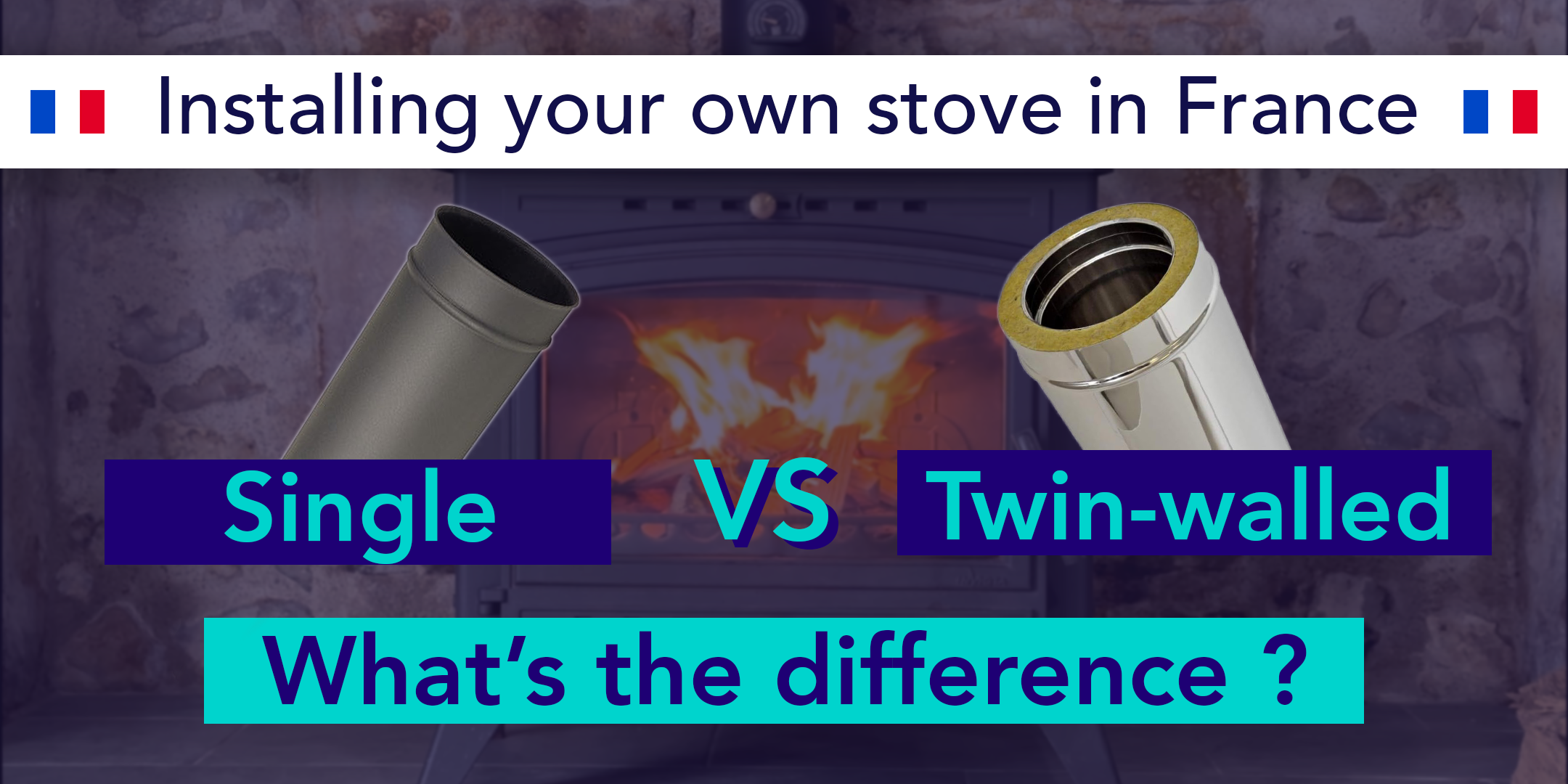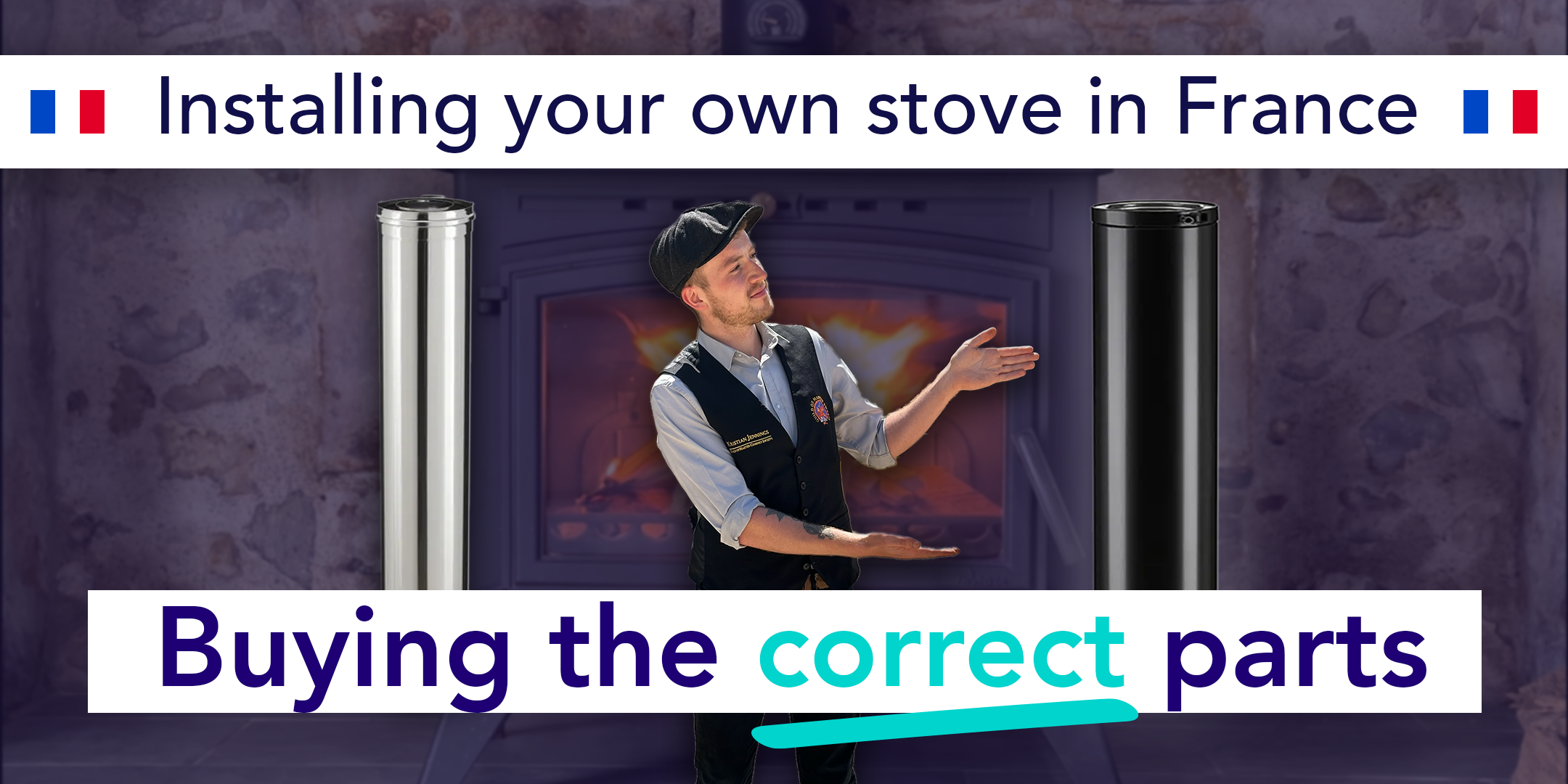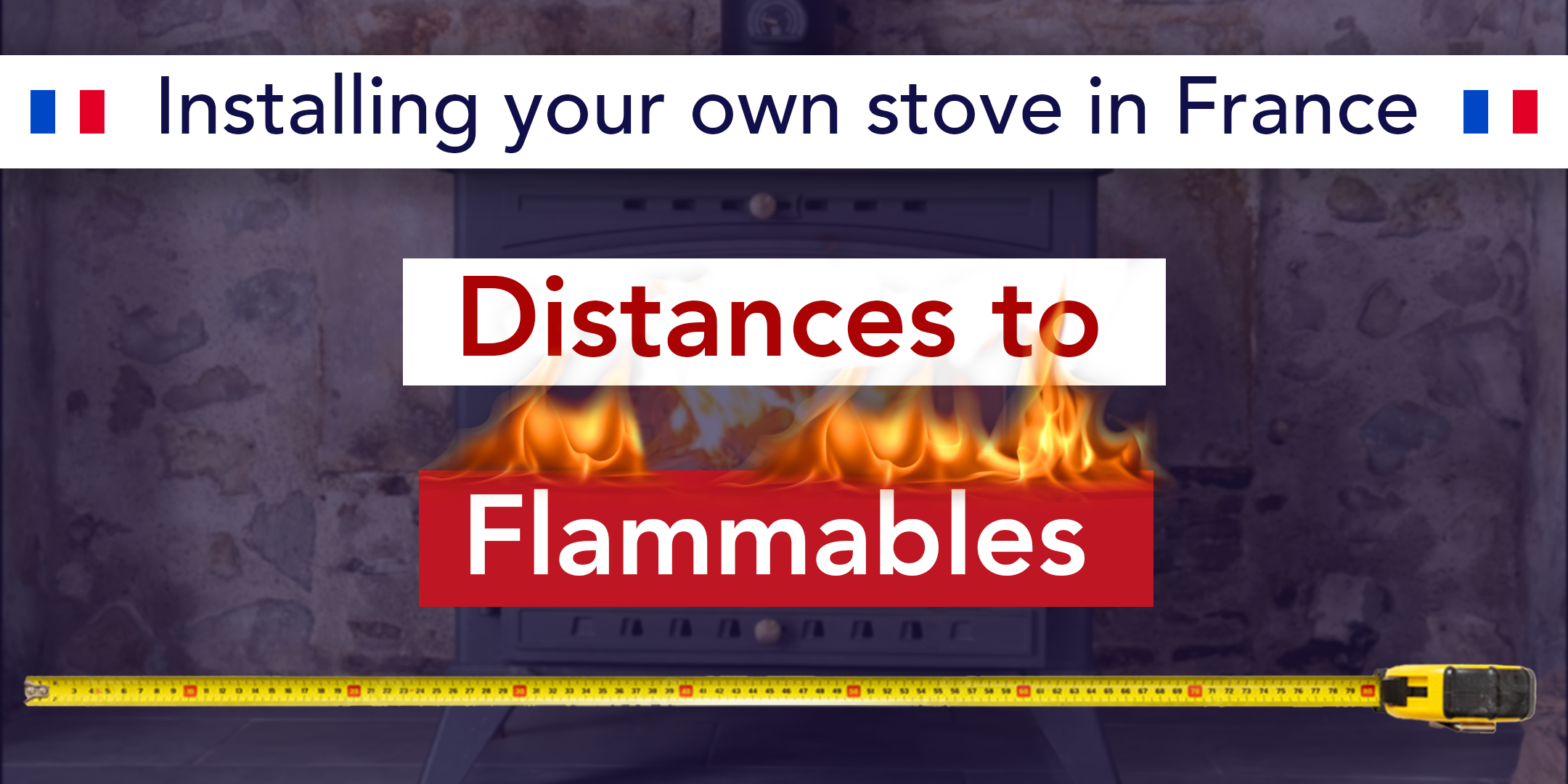Depending on your stove, you may have the option to choose between a top-exiting or rear-exiting stove collar. Manufacturer’s recommendations allowing, it is always preferable to exit the stove via the top stove collar. However, please consult your stove’s manual and the French norms to confirm if this is the best option for your situation. If you are required to use the rear exit collar or have a stove that does not provide the option of a top exit collar (such as an old top-loading stove), you must ensure that you avoid using a 90-degree bend behind your appliance.
There is no stove on the market that is 100% efficient. This means that every stove will deposit debris into the flue system every time a fire is lit. Although good burn practices can help reduce the build-up in the flue, any debris that dislodges from the flue wall will fall down the flue and get stuck wherever it meets resistance. In a well-installed system with angles no steeper than 45 degrees (which we covered in an earlier blog here), the debris will get stuck at the start of the flue system. For a top-exiting stove, this means the debris will fall onto the stove’s baffle plate, which can be easily removed and cleaned. However, for a rear-exiting stove, it will fall to the lowest point in the flue system.
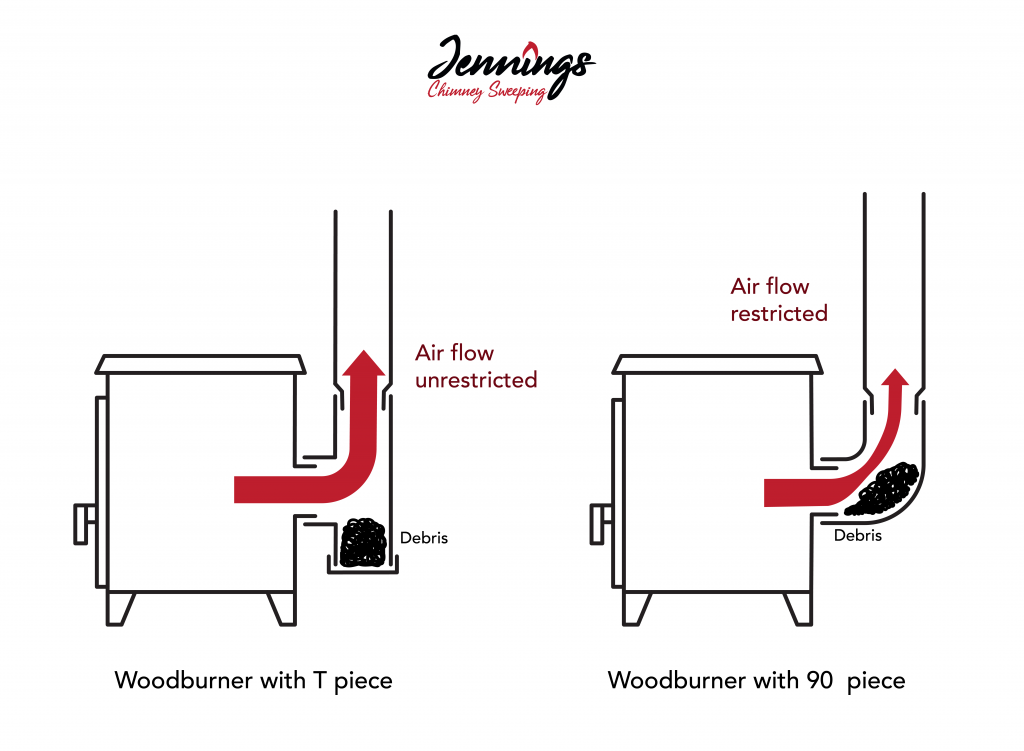
As you can see from the diagram above, when a T-piece is installed, the debris falls into the soot trap and can remain there until cleared without blocking the flue. However, when a 90-degree bend is installed, as soon as any debris falls, the flue begins to block. This continuous falling of debris and subsequent reduction in flue diameter will further block the flue and harm the efficiency of the system, leading to the production of more debris that further blocks the flue. When the available diameter of the flue is nearly or completely blocked, users will find the stove smoking back into the room, which can have obvious and unpleasant consequences. Fortunately, the fix to prevent this problem is quite simple: don’t fit a 90-degree bend, but instead, fit a T-piece.


